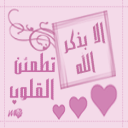الجوهرة المصونة
*****




المشاركات : 17164
العمـر : 36
تعاليق : مشرفة الطب والصحة
المزاج : 
الدولة : 
المهنة : 
الهواية : 
التسجيل : 10/10/2008
النقاط : 18248
التقييم : 501

 
توفيقك يارب

 |  موضوع: cvs examination موضوع: cvs examination  السبت مايو 01, 2010 5:18 pm السبت مايو 01, 2010 5:18 pm | |
| cvs examination
PHYSICAL EXAMINATION IN CARDIAC DISEASE, 14/06/03, .
Remember examination involves inspection, palpation, percussion & auscultation.
Ensure patient is at 45o angle (wind up bed) and turn on the light.
Always examine from the RHS of the bed.
General examination
Look from END of bed first and assess:-
* Is patient well or unwell?
* Any scars indicating previous chest/abdomen operations?
* Pacemaker inserted? hear artificial valves? fistulae (diabetes)?
* Breathlessness? on movement/effort?
* Cyanosis? - peripheral - hands (vasoconstricted/Raynauds's phenomena)
- central - lips (central circ. problem = CVS/resp.)
* Other obvious abnormalities - e.g. thyroid overactivity / drunk.
* On treatment such as oxygen, inhalers around, drains, drips etc.
* Rheumatoid disorders are assoc. with cardiac lesions, eg ankylosing spondylisis with
aortic incompetance.
* Malar flush on face = mitral stenosis
* Evidence of Marfan's, Downs, Turners (co-arctation aorta)
[Evidence of risk factors
* Ischaemic heart disease - tobacco
- lipid deposits - seen in inner 1/3 eyelid (xanthelasma) &
rarely in all extensor tendons esp. in hands, Achilles, elbow
and patellar.
* Heart valve infection (subacute bacterial endocarditis)
- fever (privileged site) - chronic immune response
- clubbing of fingers - in endocarditis/cyanotic congenital heart disease.
Reason unknown. Also occurs in lung disease esp. cancer, abscess,
empyema, TB, bronchiectasis, endocarditis, cyanotic congenital heart shunt
and liver and bowel diseases esp. inflammatory bowel disease. Not in COPD.
Rarely a genetic trait. Usually assymptomatic.
- splinter haemorrhages - immune complex deposition. Also due to manual
work, so 2-3 common in women and 4-5 in men.
- Osler nodes - v. painful lumps on finger pulps as part of the infected valve
breaks off and infarcts.
- large spleen
- haematuria - damaged kidney.
* Heart failure - swollen ankles - oedema = RHF
- crepitations (crackles) at lung bases = LHF.]
CVS exam - Peripheral
Hands
* hold firmly but not gripped - confidence
* cold - pts. in heart failure are usually vasoconstricted with cold hands.
* Clubbing - ? see diamond of light (endocarditis/congenital cyanotic disease)
* Splinter haemorrhages - endocarditis
* Osler nodes / Janeway lesions (rare as have antibiotics for endocarditis therefore don't
see advanced cases). Former = tender lumps on finger pulps, and latter = red macules on
dorsum & wrist.
* Koilonychia - spooning of nails. Suggests iron deficiency and may occur in syphilis
and ischaemic heart disease.
* Quincke’s sign = pulsation in nailbed, assoc. with aortic regurg.
* Palm - bend back to see if creases red (pale in anaemia).
* Yellowing due to smoking.
* Tendon xanthomas (best felt over Achilles or extensor tendons of hand)
Arms
Pulse - Arterial (radial)
Compare both wrists to see if radial delay, which occurs in subclavian stenosis (rare).
Then take right pulse for 15 seconds and assess if present/absent (if absent check other
risk in case artery damaged in CABG, and then consider if shutdown), and rate/rhythm
Check OK to raise arm (no shoulder pain) and then raise arm while taking radial pulse
and brachial pulses to check for a collapsing pulse (fast sudden downstroke) which
occurs in aortic regurgitation. Also look for muscle knock.
Note tachycardia (>100) or bradycardia (<60)
Note if regular, and if irregular is there a consistent pattern to the irregularity (coupled
extrasystoles or Wenkebach heart block) or not (AF or ectopics). Sinus arrhythmia is
noted by a variation on breathing.
BP (usually done by nurses). Note that BP is different in the 2 arms if coarctation of the
aorta. Systolic is the first appearance of heart sounds (thumping), then may have
auscultatory gap (~10mmHg) and 4th sound and then 5th. Diastolic is disappearance of
sounds. Normal = 100+age over <100.>100 need to
treat. A wide pulse pressure suggests aortic incompetence and a narrow pulse pressure
aortic stenosis.
May feel brachial pulse and listen with stethoscope for bruit = sound of turbulent blood in
artery.
Head
Eyes - conjunctiva in lower lid - anaemia
- xanthelasma (hyperlipidemia) [can rarely get xanthoma = sign of
hypercholersterolaemia in tendon deposits esp. Achilles and on hands, and
tuberous xanthomas at elbows. Can also get see hypertriglyceridaemia as small
yellow deposits on buttocks and extensor surfaces, each with a red halo]
- corneal arcus - beige ring around iris indicating lipid deposit. Common in
elderly.
- Argyll-Robertson pupils (constricted & react to accom. not light. Assoc. with
patchy atrophy iris) occur in neurosyphilis and may occur in DM, & assoc. with
syphilitic aortic incompetance).
- may do fundoscopy for hypertension effects or Roth spots of IE
- may get jaundice with prosthetic valves, due to low-grade haemolysis.
- exopthalmos of Graves disease, with dysrhythmia and heart failure
Mouth - cyanosis under tongue?
- teeth - diet clues.
- mucosal petechae and dental engineering may suggest endocarditis
- High-arched palate of Marfan's.
Neck
* Carotid pulse = nature (of carotid as near heart) - normal / volume loaded (strong and
whoosh up & down - due to aortic incompetence or large SV as peripheral vasodil. as e.g.
fever, thyrotoxic, exercise or drugs or CO2 retention) / slow.
= upstroke - how quickly it rises. E.g. in atherosclerosis decreased
compliance causes a faster upstroke (therefore factor age), & slow upstroke in aortic
stenosis. Can hear the 'waterhammer' of aortic incompentence, plateau pulse of aortic
stenosis, 'bisferiens' pulse of mixed aortic valve disease (stenosis and incompentence).
= note any rigidity of vessel wall also (atherosclerosis).
= listen for bruits (also in femorals)
= Look for Corrigan’s sign - visible pulsation in neck, assoc. with aortic
regurg.
* JVP (Jugular venous pressure) - vertical height in cm above the manubriosternal angle
to pulsating external or upper limit of internal jugular veins. Note that can tell venous
pulsation from arterial as less pressure (can stop by pressure) and 2 pulses per heart beat
(A & V waves). Easiest if relax head and turn chin towards right. Assess at level of
neck. If can't see internal jugular can see if can increase pressure by pressing on liver
(check not sore 1st! = hepatojugular reflex). If still can't see squeeze neck and see if
external fills, indicating JVP previously not raised. Normal = 4cm. JVP is raised in RHF
(also look for large liver and pitting ankle oedema).
Character of JVP - should be a double pulsation with an a wave (atrial contraction)
synchronous with carotid pulse, and v wave (ventricle contraction) afterward. Large a
waves are caused by obstruction to flow from RA, eg by pulmonary hypertension,
pulmonary stenosis or tricuspid stenosis. Large v waves are caused by tricuspid
regurgitation. Loss of dip between waves is due to complete heart block when RA
contracts against a closed tricuspid valve.
Dilated neck veins with no pulsation suggests a non-cardiac cause eg carcinoma of
bronchus obstructing SVC, or a kinked ext. jugular vein. If rises on inspiration (usually
falls) it suggests constrictive pericarditis or pericardial effusion causing tamponade
(Kussmaul's sign)
* Trachea position as apex shift may be due to cardiomegaly or mediastinal shift.
Praecordial exam
* Inspection
Rarely see an abnormality.
Look for scars (including in lateral thoracotomy = mitral valve replacement and midline
sternotomy = CABG), pacemaker
Look for laboured breathing, symmetrical lung movement
* Palpate
Apex beat
Position (normal = 5th intercostal space in mid-clavicular line; can enlarge in failure
(hypertrophy) to 6th IC space and anterior/mid-axillary line).
Nature - heaving/thrusting/tapping (hyperdynamic) - pressure (doesn’t fall away from
hand as quickly) or volume loaded. Tapping - feel 1st heart sound in mitral stenosis,
thrusting = increased SV, heaving = mitral or aortic stenosis, or L>R shunt. Dyskinetic
after MI. Double or triple impulse in HOCM.
Heaves - enlarged right ventricle under sternum as enlarges forward and feel under
sternum and to left - left parasternal lift. Feel if the enlarged heart is feeble (dilated) or
stronger (LV/RV hypertrophy) than usual.
Thrills (can feel some heart murmurs). Feel in aortic and pulmonary areas with side of
hand.
* Auscultation
Listen for heart sounds mainly in below areas, but may hear loudest in 'wrong' place e.g.
mitral defect in aortic area.
Right 2nd IC space for aortic valve (patient forwards); left 2nd space for pulmonary
valve; lower end sternum for tricuspid (patient on LHS)
Listen for heart sounds, added sounds and murmurs
Heart sounds - feel carotid at same time as S1 is synchronous with upstroke carotid.
Only hear valves opening in disease
1st (S1) = mitral (and tricuspid) valve closure. Loud in mitral stenosis (tapping apex) and
soft in mitral regurg. Splitting of S1 in inspiration may be heard and is normal.
2nd (S2) = aortic/pulmonary valve closure. Affected by resp. - delay aortic on
inspiration accentuates split. Do NOT ask patient to hold breath to hear. Wide splitting
occurs in right bundle branch block, pul. stenosis and ASD (wide and fixed split).
Paradoxical splitting (reverse) occurs in aortic stenosis, systemic hypertension and left
bundle branch block as LV takes longer to empty.
3rd (S3) = in diastole and just after S2 = filling of left ventricle. Normal in <30 and
pregnancy, and low (best heard with bell in mitral and tricuspid areas). Occurs also in
ischaemia, acute angina/MI, RHF, LHF, mitral regurg., fibrosed ventricle or constrictive
pericarditis.
4th (S4) = occurs just before S1. Always abnormal and indicates atrial contraction
against stiff ventricle due to aortic stenosis, LVH, severe HT, MI, cardiomyopathies
Ejection systolic click = early in systole due to bicuspid aortic valves and systemic
hypertension. Mid-systolic plop occurs in mitral prolapse.
Opening snap - May hear with diaphragm between mitral and tricuspid positions,
preceding the mid-diastolic murmur of mitral stenosis.
Gallop rhythms - S3 or S4 with sinus tachycardia leading to summation and appearing as
a single sound = summation gallop
Murmurs - see below.
When, where loudest? radiation?
May also hear murmur over carotid pulse
In systole or distole? - feel pulse!
Length - early, mid, late, pan?
Pitch (low/high)
Loudest in inhalation in RHS and on exhalation on LHS.
Listen to apex beat with bell of stethoscope (to detect S3 and mitral stenosis), and to all
others with diaphragm. Also diaphragm at apex beat.
Feel carotid pulse as listen to distinguish 1st sound before pulse and 2nd after.
Can confirm murmur by echocardiography
Movements
Move heart closer to chest wall so can hear murmurs clearer, esp. diastolic. MUST show
movements in finals!!
* Tip to LHS - re-feel position of apex beat.
- listen to apex beat w. bell and diaphragm as tip to side to enhance mitral
stenosis
* Tip forward - listen to tricuspid, aortic and pulmonary areas w. diaphragm.
* Breathing - get to breath in, out and hold it (while sitting forward) while listening in 4th
ICS to maximise the diastolic aortic regurg. murmur. All diastolic murmurs are increased
on expiration. Right sided murmurs (tricuspid & pulmonary) are louder in inspiration.
NB all murmurs are increased by exercise, therefore if can't hear get to walk and then
listen.
Completion
Sit forward and listen at lung bases for pulmonary oedema of LVF, and feel for sacral
oedema of CCF.
Palpate 2 femorals, popliteal, dorsalis pedis and tibialis posterior pulses. Check for any
delay between radial and femoral pulses, which occurs in coarctation of the aorta
(femoral is delayed and weaker).
Check for hepatomegaly = back-pressure in CCF. Pulsitile in tricuspid incompetance.
Feel for splenomegaly of endocarditis, and for abdominal aortic aneurysm.
Feel for foot pulses and ankle oedema.
Check BP, ?fundoscopy of retina (HT, Roths spots of endocarditis), and urine dipstick
check for blood (endocarditis). Check BMI (ht and wt)
Heart murmurs
* Timing - systolic/diastolic
* Stenotic occur when a valve is meant to be fully open and is not, and regurg. occur
when a valve is meant to be closed and is not.
* Use bell (very lightly) for low sounds and diaphragm for high-pitched.
* Left heart murmurs are accentuated on expiration and right on inspiration. Mitral
stenosis is accentuated by leaning to the LHS and aortic regurg. by sitting forward.
* Intensity - 1=barely audible with utmost concentration.
2=soft but easily heard.
3=loud but without thrill (can feel).
4=loud with a thrill.
5=loud with barely any contact between stethoscope and chest.
6=loud and can hear without stethoscope.
* Quality - crescendo/decrescendo aka diamond shaped or ejection systolic (|/\|___)
* Location
* Pitch
* Changes by respiration or position
* Radiation pattern
Therefore can hear the sound of turbulent blood in:-
systole for aortic stenosis or mitral incompetence
diastole for mitral stenosis or aortic incompetence
* Ejection systolic murmur = diamond shaped as waxes and wanes with outflow
pressures. Includes flow murmurs which are common in children and high ouput
murmurs of pregnancy or tachycardia. Organic causes include aortic stenosis and
sclerosis, HOCM and pul. stenosis, and congenital valve defects eg William's disease
(memb. above the aortic valve. Assoc. with mental retardation & hypercalcaemia).
* Pansystolic murmur = uniform intensity and merges with S2. Due to mitral or tricuspid
regurg.
* Early diastolic = high-pitched occuring in aortic regurg. Graham-Steell murmur (mitral
stenosis > pulmonary HT > pul. regurg.)
* Mid-diastolic = low-pitched and rumbling. Occur in mitral stenosis, aortic regurg. and
RF (rheumatic fever).
* Aortic stenosis
Murmur in systole
Ejection systilic diamond shaped murmur -
Esp. when sit forward and exhale
Listen in aortic area but may be heard elsewhere
Radiates to carotids
Slow carotid upstroke
* Aortic regurgitation
Murmur at start of diastole, & may also hear diamond as large vol.
Assoc. with marfans (aortic root dil., which can progress to dissection!)
Increased SV (70ml normal  140-180 ml!) 140-180 ml!)
Distension central arteries,
Large vol. JVP (waterhammer)
Head bobbing (De Musset's sign)
Wide pulse pressure
Collapsing/ pulse in arms
Pistol shot femorals (snapping of blood)
* Mitral regurgitation
Very common murmur
Reliably heard at apex
Radiates to mid-axillary line/axilla
Pan-systolic between 1st and 2nd heart sounds
* Mitral stenosis
Very rare in West, as mainly complication of rheumatic fever.
Quiet murmur
Hear loud 1st sound and can feel (tapping)
Hear when valve opens in diastole (opening snap), and increases during atrial systole
(unless atrial fibrillation).
* Mitral valve prolapse
Occurs in 10% normal pop.
Systolic 'plop'
Assoc. with Marfans
Note:-
Can listen to heart sounds on Littmann CD, or at
http://www.geocities.com/hotsprings/9596/index.html
Investigations
Can confirm examination findings by:-
* chest X-ray
* E.C.G. - ischaemia as strain on heart. Signs of R/LVH.
* Treadmill exercise test with E.C.G. for ischaemia
* Echocardiograph - muscle and ventricle size & valve function (esp. mitral)
* 24 hour E.C.G. for arrhythmias
* Cardiac catheterisation for pressure measurements, blood oxygenation & angiogram
* Radioscan for imaging live, ischaemic or dead muscle. | |
|
نورس
*********




المشاركات : 30951
العمـر : 94
تعاليق : مؤسس منتدى النورس
المزاج : 
الدولة : 
المهنة : 
الهواية : 
التسجيل : 09/10/2008
النقاط : 39243
التقييم : 1559

 
 |  موضوع: رد: cvs examination موضوع: رد: cvs examination  الأحد مايو 02, 2010 8:27 am الأحد مايو 02, 2010 8:27 am | |
| يسلموا جوهرة القصر على التوبيكـــ
جزاكِ الله كل خير | |
|
عاشقة الزهور
*****




المشاركات : 75737
العمـر : 41
المزاج : 
الدولة : 
المهنة : 
الهواية : 
التسجيل : 09/03/2009
النقاط : 101796
التقييم : 846
 |  موضوع: رد: cvs examination موضوع: رد: cvs examination  الإثنين مايو 03, 2010 2:03 pm الإثنين مايو 03, 2010 2:03 pm | |
| | |
|
الجوهرة المصونة
*****




المشاركات : 17164
العمـر : 36
تعاليق : مشرفة الطب والصحة
المزاج : 
الدولة : 
المهنة : 
الهواية : 
التسجيل : 10/10/2008
النقاط : 18248
التقييم : 501

 
توفيقك يارب

 |  موضوع: رد: cvs examination موضوع: رد: cvs examination  الثلاثاء أغسطس 24, 2010 10:25 am الثلاثاء أغسطس 24, 2010 10:25 am | |
| | |
|





